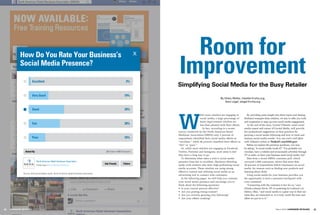Understanding And Implementing Corrections And Clarifications

Table of Contents
Identifying the Need for Corrections and Clarifications
What constitutes an inaccuracy? The definition extends beyond simple factual errors. It encompasses a range of issues, including:
- Factual inaccuracies: Presenting false or misleading information. This includes outdated data, incorrect statistics, and misrepresented facts.
- Grammatical errors and typos: While seemingly minor, these can undermine credibility and make your content difficult to understand.
- Contextual errors: Information that is accurate in isolation but misleading within its surrounding context.
Examples of situations demanding corrections and clarifications are abundant:
- News reporting: A journalist might misquote a source or incorrectly report a statistic.
- Scientific publications: Researchers may discover errors in their data analysis or methodology post-publication.
- Marketing materials: A company might unintentionally make a false claim about its product or service.
Failing to correct errors has serious repercussions:
- Reputational damage: Inaccurate information erodes trust and credibility.
- Legal repercussions: False statements can lead to lawsuits and hefty fines.
- Loss of credibility: Audiences are less likely to trust future communications from a source known for inaccuracies.
Proactive error detection is crucial. Best practices include:
- Rigorous proofreading: Employ multiple layers of review to catch errors.
- Thorough fact-checking: Verify all information from reputable sources.
- Peer review: Utilize expert review, particularly in academic and scientific contexts.
Developing Effective Corrections and Clarifications
Crafting effective corrections and clarifications requires careful consideration:
- Timeliness: Address errors as soon as they are discovered. Prompt corrections demonstrate responsibility and minimize the spread of misinformation.
- Transparency and Accuracy: Clearly and concisely state the nature of the error and provide the accurate information. Avoid ambiguity or hedging.
- Prominence: Place corrections in a highly visible location, ideally near the original inaccurate information, ensuring its visibility matches or surpasses that of the original content. This could mean a prominent banner on a website or a clearly marked correction in a printed publication.
- Specificity: Accurately pinpoint the error and provide the precise correction. Avoid vague statements.
- Tone: Maintain a professional and respectful tone. Avoid defensiveness or blaming others.
- Examples of well-written corrections: Study how reputable organizations handle corrections to learn from their best practices.
Implementing Corrections and Clarifications Across Different Platforms
The method for implementing corrections varies depending on the platform:
- Website updates: Use version control systems to track changes and archive previous versions. Clearly indicate the corrected information and possibly the date of correction.
- Social media: Issue a public correction, address relevant comments, and engage with users who might have been misled.
- Print media: Publish corrections in a designated section, often with a clear heading like "Corrections." In books, corrections might be included in subsequent editions or online errata.
- Legal considerations: Consult legal counsel if necessary, especially if the inaccuracies have legal implications.
Measuring the Effectiveness of Corrections and Clarifications
Monitoring the impact of your corrections is crucial:
- Monitoring feedback: Track reader/user comments, social media mentions, and other forms of feedback to gauge the response to the corrections.
- Analyzing impact on reputation: Monitor brand mentions and sentiment analysis to assess the effectiveness of your corrections in restoring trust.
- Continuous improvement: Analyze the reasons for errors to refine your processes and prevent future inaccuracies. Regular reviews of your fact-checking and proofreading procedures are vital.
Conclusion: Mastering the Art of Corrections and Clarifications
Mastering the art of corrections and clarifications is essential for maintaining credibility and building trust. By proactively identifying and promptly addressing inaccuracies, and implementing effective strategies across various platforms, you can mitigate the risks associated with misinformation. Remember, accuracy is paramount, and timely, transparent corrections demonstrate responsibility and commitment to your audience. Implement these strategies for corrections and clarifications to enhance your reputation and build trust with your audience. Mastering the art of corrections and clarifications is crucial for maintaining credibility in today's information landscape.

Featured Posts
-
 One Week Of Action 99 Arrested 35 Illegal Refineries Shut Down
Apr 30, 2025
One Week Of Action 99 Arrested 35 Illegal Refineries Shut Down
Apr 30, 2025 -
 Limited Time Grab Adidas 14 Slides During Spring Sale
Apr 30, 2025
Limited Time Grab Adidas 14 Slides During Spring Sale
Apr 30, 2025 -
 Trade Shows A Key Marketing Touchpoint For Schneider Electric
Apr 30, 2025
Trade Shows A Key Marketing Touchpoint For Schneider Electric
Apr 30, 2025 -
 Family Seeks Justice After Inmates Alleged Torture And Murder At San Diego Jail
Apr 30, 2025
Family Seeks Justice After Inmates Alleged Torture And Murder At San Diego Jail
Apr 30, 2025 -
 Channing Tatum Moves On New Romance With Inka Williams Following Zoe Kravitz Breakup
Apr 30, 2025
Channing Tatum Moves On New Romance With Inka Williams Following Zoe Kravitz Breakup
Apr 30, 2025
